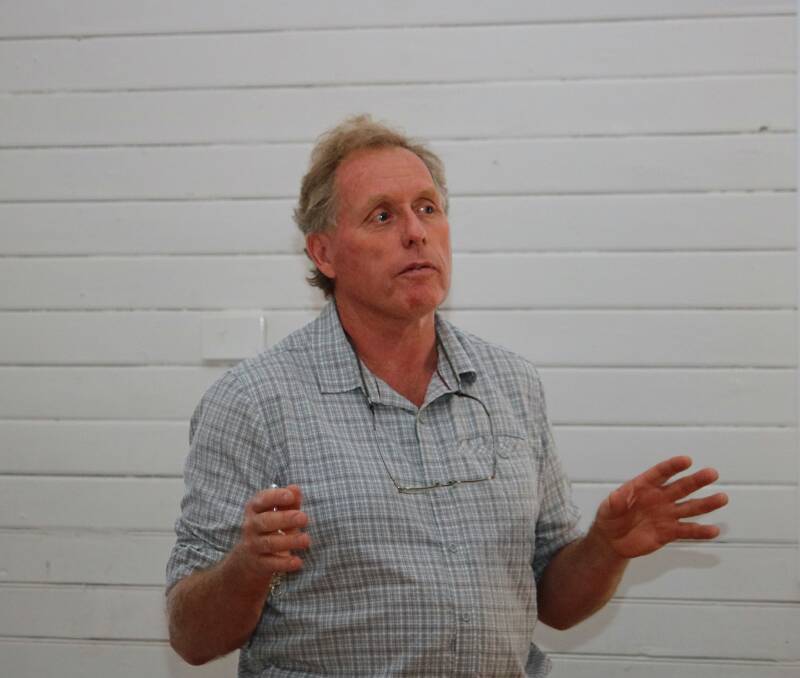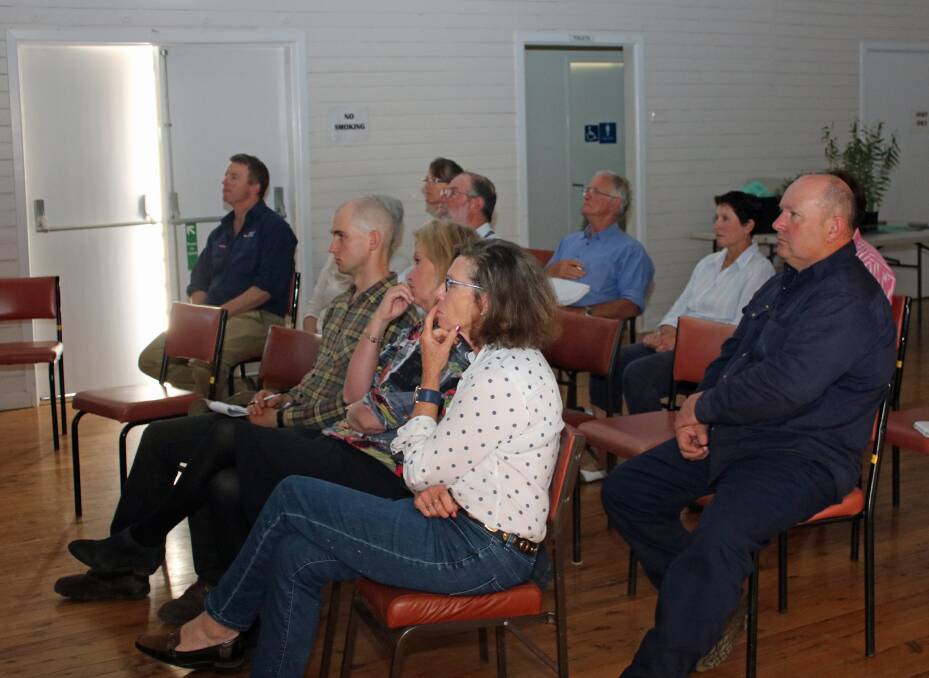
Koalas continue to be a hot topic of conversation in the Gunnedah shire, with a drought and koala information session in Breeza on Thursday.
Subscribe now for unlimited access.
or signup to continue reading
Kootingal ecologist Phil Spark met with landholders to talk to them about how they can help to preserve the iconic species through tree planting and update them on the latest findings of ongoing koala surveys.
Mr Spark has been working as an ecological consultant for North West Local Land Services (NW LLS) for three years, and monitoring almost 90 sites, the majority of which are on the Liverpool Plains.
The surveys have informed a koala activity map, which will help LLS to determine where to plant tree corridors to assist koalas with food and shade in the summer months.

Mr Spark said a recent focus of the survey had been the “big unknown” – the southern end of the Liverpool Plains. Thursday’s session was a chance to ask landholders to mark their properties on maps to show where they could build up vegetation to encourage greater numbers of koalas.
“Talking to landholders, those koalas have declined in the last few years,” he said.
“It’s not optimal habitat.
“Part of today is about identifying corridors land care could regenerate and create to improve linkage between populations we have in Pine Ridge, Spring Ridge and the Liverpool Plains.”
Mr Spark said koala-friendly trees were key to boosting numbers, with more koalas found in areas with a diverse range of gum trees and ample shade.
“If you plant trees, koalas will come. Tree lines are real magnets for koalas,” he said.
“They don’t mind going over [open] ground but then they’re more vulnerable to threats, so we want to get them up off the ground.”
READ ALSO:
- State government koala habitat push draws mixed reviews
- Local chosen to maintain koala water drinkers over summer | Project Koala
- OEH backs koala conservation in Gunnedah through Saving our Species program | Project Koala
- Farmer shares new ‘user-friendly’ design for Blinky Drinker | Project Koala
- Gunnedah’s koalas heavily impacted by drought | Project Koala
Ingrid and Wayne Yeo own land out at Emerald Hill and have been actively planting tree corridors using funds from the Office of Environment and Heritage’s Save Our Species program. The pair planted 718 trees between May and September in the hope it will help their resident koalas.
Mrs Yeo said they had lived on the properties for almost 20 years and up until 2010 saw koalas almost every day and even had four living in their immediate backyard. Since then, numbers have dropped and they are only sighted about once a week.
Mr Spark said koalas were once prolific in the Gunnedah shire but numbers had rapidly declined since 2009, resulting in a crisis meeting in Gunnedah in March 2016 to address the issue.
Tree lines are real magnets for koalas.
- Ecologist Phil Spark
The ecologist said his “lightbulb moment” over the fate of koalas came in November 2015 when he revisited Breeza Station and witnessed declining numbers and health of koalas. Despite the decline, Breeza Station remains a stronghold for koalas with 69.8 per cent activity.
Mr Spark said he set out to systematically and accurately determine koala numbers through the surveys rather than rely solely on “anecdotal information” from locals.
“I find land holders are a particularly good source of information [but] combined, these surveys are going to give a much better picture of koala populations,” Mr Spark said.
“In the past we’ve lacked systematic numbers to accurately say ‘koalas have declined this much’.”
The drought and koala information session in Breeza was hosted by North West Local Land Services Community Advisory Group and Upper Mooki Landcare Inc.

